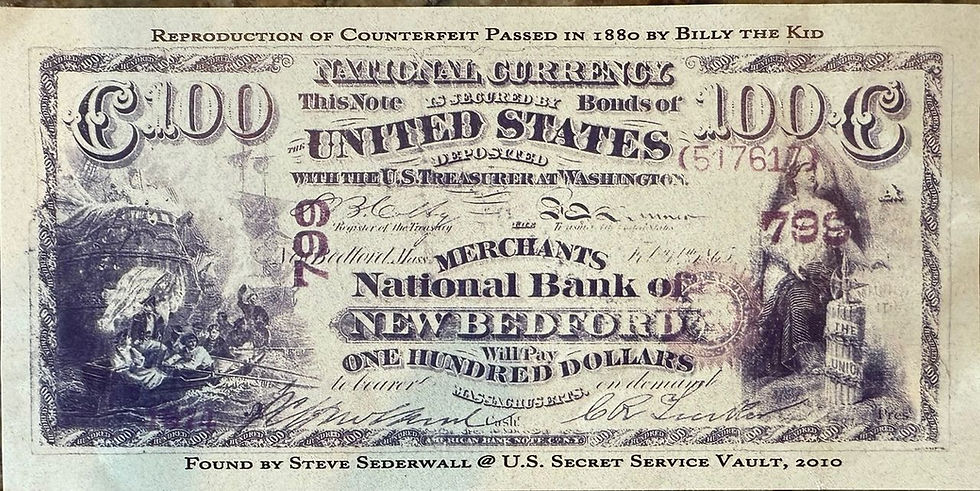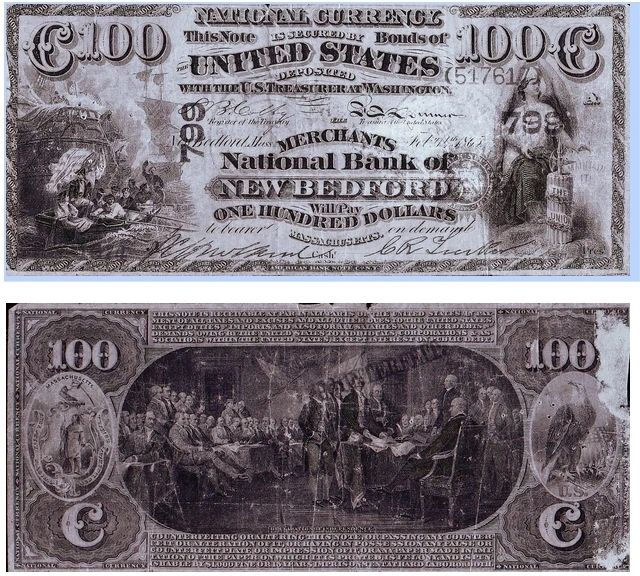Murder at Black Water: The Ghosts of Lincoln's Forgotten Men.
- jeremiahslatten
- Nov 4, 2024
- 5 min read
Updated: Sep 24
By Jeremiah Slatten

The story of the West isn't just gunfights at high noon or lone sheriffs cleaning up dusty towns. It's as much about the gritty details, the moral ambiguity, and the stories nobody wants to tell. In Lincoln County, New Mexico, 1878, three men—Buck Morton, Frank Baker, and William McCloskey—met their fates at a desolate spring on the Penasco River. Their deaths, known to some as the "Murder at Black Water," were buried deep in the sands of time, left mostly to folklore, but there's more to it than a couple of forgotten graves and a ghost story. This tale's got everything: loyalty, betrayal, and a lawless land where sometimes justice was decided with a bullet rather than a gavel. But as with any good Western, you have to wonder how much of this story was tailored to fit the needs of those telling it?
The Shadows of Justice
Let's start with what we know. Or rather, what we think we know. It was March 1, 1878, and Dick Brewer had just been appointed as a special constable by Justice of the Peace Wilson. With warrants in hand, Brewer and his newly formed "Regulators"—including a young, restless Billy the Kid—set off to round up Sheriff Brady's men, hoping to restore order where "justice" was, well, relative. Lincoln County was no stranger to corruption, and Brewer was no stranger to the idea of bending the law if it served a higher purpose. But what happened on the ride back to town with Morton and Baker as prisoners leaves a trail of questions that nobody's really answered.
Historians have told us about a few things over the years, each spinning it their own way. First, there's the Regulators' tale: Morton and Baker, "desperate" men, somehow overpowered the one man sympathetic to them—McCloskey—and made a run for it, which ended in their deaths at Agua Negra Springs. It's a tidy story, painting the Regulators as reluctant executioners, only pulling their guns in self-defense. But then there's Pat Garrett's version, full of details he couldn't have known unless he'd been right there in the saddle with Billy himself. Garrett paints Billy as a reluctant participant, "terrified" but bound by loyalty to his gang. Garrett, of course, had his own reasons for mythologizing Billy; he wasn't just the Kid's killer—he was also his storyteller, crafting a narrative that cast Billy as something bigger than an outlaw.
Then there's the "House" story, backed by Lincoln County's own economic powers, led by Jimmy Dolan. They wanted to make sure Morton and Baker stayed silent—maybe dead silent. Their version claims Morton and Baker were executed in cold blood while on their knees, begging for their lives. But isn't it curious that their story so closely resembles the actions they accused Frank Baker of committing himself? It sounds like projection, pure and simple.
Unearthing the Evidence (Or not)
More than a century later, “forensic detectives” revisited the scene with metal detectors and old maps, like relic hunters stepping back in time. They found spent cartridges scattered near the spring, each marked and mapped, slowly piecing together the story through the rusty casings and crumbling soil. They found rifle shells lying a few steps apart, pistol rounds in a pile—suggesting that each shot was fired in cold calculation, not in the chaos of self-defense. When you add it up, there's a cold finality to it. Some believe each of the ten Regulators fired a single shot into the bodies to seal a pact: we did this together, and we'll carry it together.
But let's take a step back. Forensic evidence collection on a crime scene over a hundred years old is an exercise in storytelling as much as it is in science. There's no way to know with certainty how those cartridges ended up where they did, or even who pulled the trigger. Metal detectors, maps, and a few rusted shell casings can tell us a little, but they can't confirm the story that historians have passed down. Every detective and historian has their own view, their own agenda—be it mythologizing Billy the Kid or painting the Regulators as heroes of justice. You'd have to be a fool to take it all at face value.
The same skepticism applies to the so-called "forensic findings." For all the rusted bullets and time-worn maps, the conclusions drawn from this evidence feel shaky at best, colored by the biases of those who are intent on rewriting or preserving the old storylines. Evidence is one thing; interpreting it a century later, through the lenses of legend and personal bias, is another.
Garrett, the Regulators, and "The House"
Consider Garrett. As sheriff, Garrett staked his reputation on being the man who brought Billy the Kid down, the figure who stood above the corruption of Lincoln County. But Garrett wasn't above twisting the truth. His accounts are full of dramatic details he could only have guessed, given that he wasn't even in town when the killings happened. Garrett wasn't just recounting history; he was selling a legend. His version of events frames the Kid as a reluctant killer, an image that allows Garrett to play the hero. It's a convenient story—one that just happened to align perfectly with the narrative Garrett needed for his reputation.
And what about Brewer and the Regulators? Their story doesn't quite hold up either. They claimed Morton and Baker tried to escape, but if these prisoners were truly disarmed and riding on exhausted horses, an escape attempt feels almost laughably implausible. The Regulators had plenty of opportunities to kill the prisoners if that was their plan; they didn't need to stage a botched escape in the middle of nowhere. Brewer's tale of a hidden "pocket pistol" adds to the drama but rings hollow, a detail that strains credulity. Why wouldn't the Regulators have searched Morton thoroughly if they suspected he was dangerous? Brewer's story of a surprise escape feels like something out of a dime novel, not an honest account of frontier justice.
And finally, there's the House. Dolan and his associates had every reason to ensure that Morton and Baker were silenced permanently, and they had the resources to craft a narrative that suited their needs. Their version of events, painting Morton and Baker as cowards begging for their lives, mirrors their own violent tactics. Could it be that the House was projecting its own brutality onto its enemies, justifying their deaths in a way that would pass muster with the townsfolk?
The price of Western Justice
Maybe what happened that day in March 1878 will never be fully known. Maybe that's part of the West's allure—its shadows, its half-truths, and the secrets the desert keeps for herself. The Lincoln County War was more than a battle of bullets; it was a struggle for power, money, and survival. There's no clear-cut justice here, no righteous lawmen or pure-hearted villains. The Regulators may have started as men of the law, but by the end, they'd become outlaws in their own right. They were all a little bit right, a little bit wrong, and entirely human.
In a place where the law was scarce, and justice was a matter of who had the fastest draw, it's no wonder that men like Billy the Kid became legends. But legends, as we've seen, are mostly built on bones and buried truths. The "Murder at Black Water" is a reminder that sometimes justice isn't clean or even fair. It's just what survives after the dust settles, the memory of a few brave men and a few too many bullets, left to rust in the dirt, long after the guilty and the innocent alike are gone.
And maybe, if you stand out there by the rocks, if you listen close enough, you might still hear the whisper of their story, hidden somewhere between the cactus and the desert wind. But don't believe everything you hear—the desert knows better than to give up all her secrets.




Comments